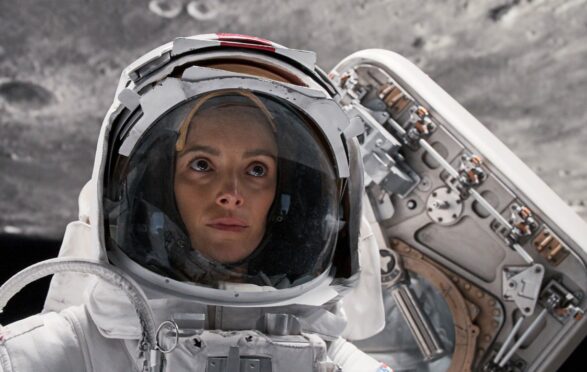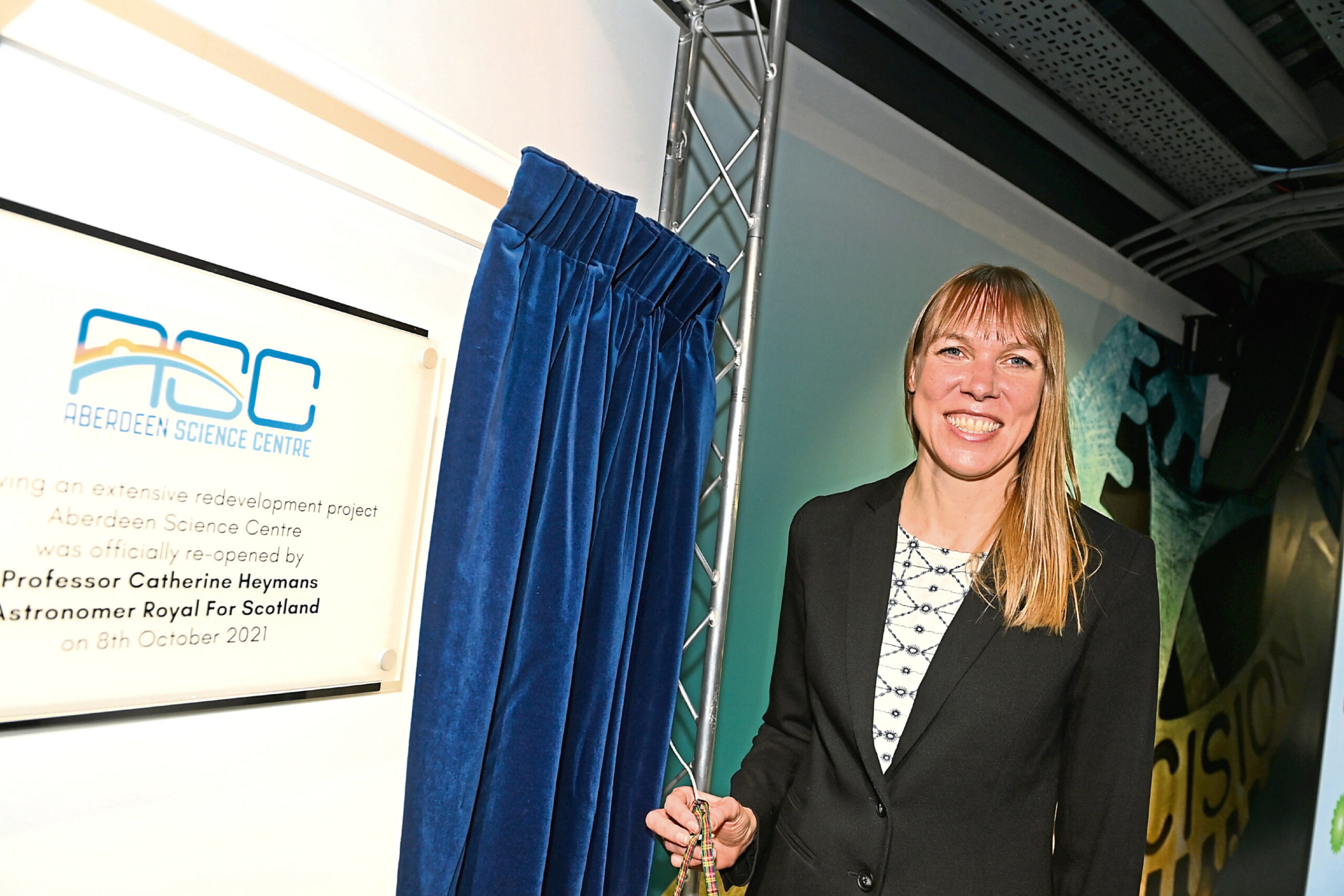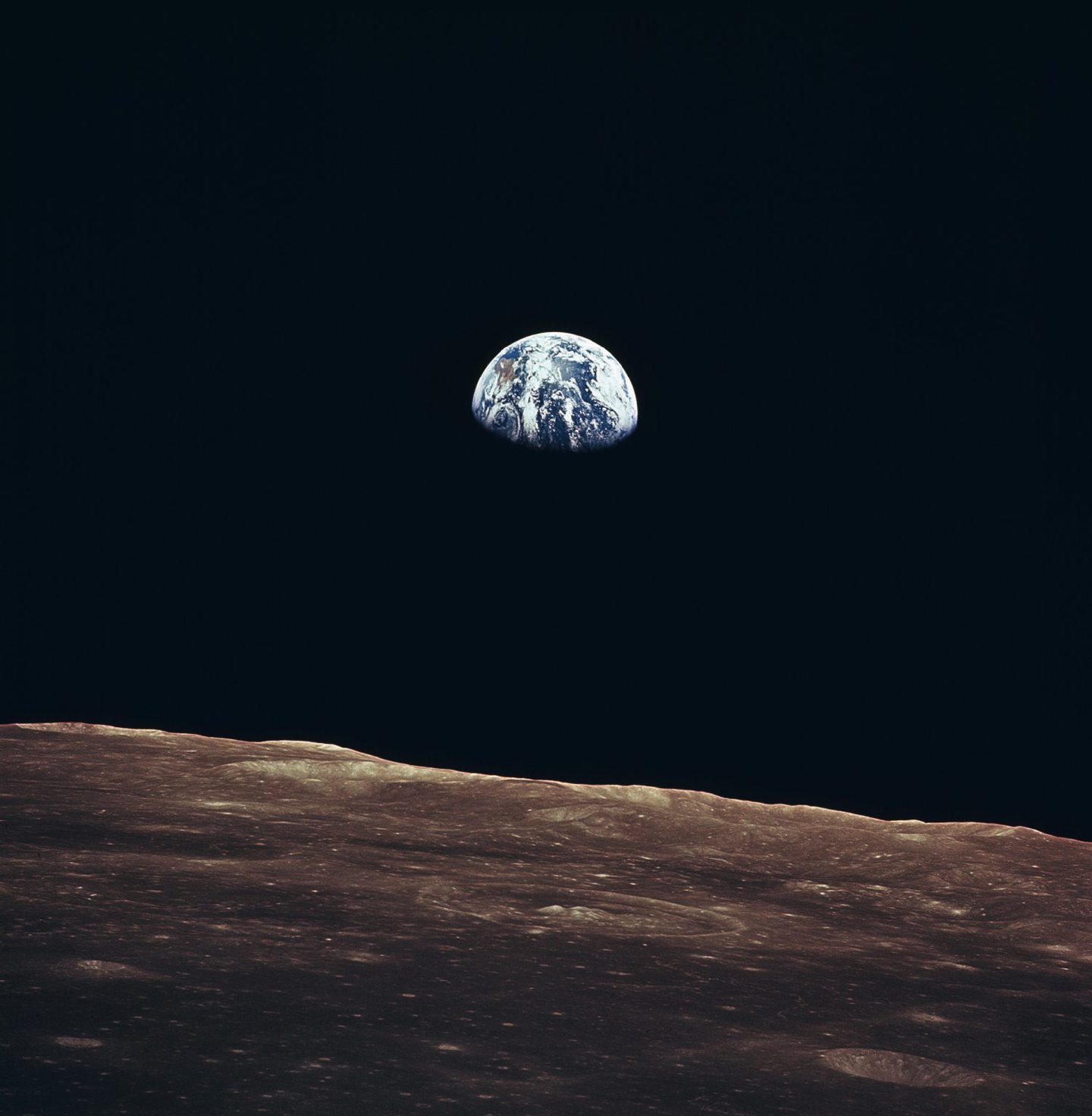
Scotland’s first female Astronomer Royal watched in awe as humanity made its return to the moon, half a century after Apollo 17 touched down on its cratered surface on December 11, 1972.
In what is one small step for man but a giant leap for womankind, the current mission aims for the first time to have women and people of colour landing not only on the moon but eventually Mars.
As Nasa’s Artemis spacecraft reached its destination on Monday, Catherine Heymans, 44, watched with bated breath from her bed at home in Edinburgh.
Appointed in May, she is also a professor of astrophysics and European Research Council Fellow at Edinburgh University but, in her eighth month of Long Covid, she was glued to lunchtime TV as Artemis’s Orion capsule swept 80 miles above the lunar surface before going into larger orbit, losing contact for 34 heart-stopping minutes as it took place on the far side of the moon.
When the signal returned, beaming back images to Earth, she heaved a sigh of relief.
The mission began on November 16 from the Kennedy Space Center in Florida, led by Nasa along with partners the European Space Agency (Esa), Japan Aerospace Exploration Agency and Canadian Space Agency. Using the most powerful rocket Nasa has built, this mission is not crewed while important equipment tests are made but humans will follow in subsequent missions this decade – including the first woman and person of colour to walk on the moon.
Buzzing with excitement, Heymans told The Sunday Post: “I was not alive the last time anyone was walking on the moon. Which is why I was watching the live feed from my bed. It was spectacular. Artemis is a new programme at the start of deep space exploration. We have only ever had human exploration of the moon and that was 50 years ago. So far, only men have set foot on it.
“Nasa’s announcement that women and people of colour will walk on the moon and go to Mars is super exciting. I dream in the future of seeing people on Mars. I loved the film The Martian with Matt Damon. It would be such an amazing achievement.
“Artemis will sow the seed of imagination in children – especially girls and those of colour – across the globe. It is very hard to aspire to be something if you can’t see someone like you doing it. There should be no limits to anyone taking on a career in science.”
Heymans was speaking as Esa announced its Astronaut Class of 2022. Three Brits – two women and the first disabled man – made it through the tough selection process: Surrey-born John McFall, 41, a para-astronaut who lost his right leg in a motorbike accident; Rosemary Coogan, 31, from Northern Ireland, who becomes a “career astronaut”; and reserve Meganne Christian, 35, who holds joint British and Italian nationality.
Heymans said: “Seventy-two women and 89 men were under consideration from the UK. Only three got through. But to have the first para-astronaut in space, and a female British astronaut and a female reserve is great, although it is disappointing to see no person of colour in the class. It may be another aspect of people not putting themselves forward because they think they don’t have a chance. That is something we need to work on.”
She hailed the achievements of Mae Carol Jemison, the first African-American woman to travel into space aboard Space Shuttle Endeavour in 1992 – and her “positive impact on women’s rights”. Jemison – thought to be inspiration for the character Danielle Poole in Apple TV+’s For All Mankind – is one of the few women to make the Nasa grade.
Heymans believes sci-fi like For All Mankind – that imagines a world in which the space race between Russia and the US continued after the first moon landing by Neil Armstrong and Buzz Aldrin on July 20, 1969 – encourages diversity and “inspires scientists”.
“Samantha Cristoforetti was the first European woman to command the International Space Station. They made a Barbie doll of her,” the Astronomer Royal said of the Italian astronaut, whose role ended in October.
The station’s first commander was Peggy Whitson who twice held the post, followed by fellow Americans Sunita Williams and Shannon Walker. But there have been 54 male commanders.
Heymans believes science needs females and males, as well as a mix of races and backgrounds, to bring different perspectives to the understanding of scientific problems. She believes excellence, not positive discrimination, should be the deciding factor on who gets the jobs but the selection should come from a diverse pool.
“Unfortunately, a good proportion of the female population is turned off science before they get to do it at school,” she said. “There’s a lot of research trying to understand why but the key is it is hard to aspire to do science if you don’t see people like you doing it. And that is one of the reasons why Artemis is important.”
Professor Javier Martin-Torres and honorary professor Maria-Paz Zorzano of Aberdeen University are both members of the Planetary Protection Advisory Team of Nasa and Esa and part of the Mars Sample Return Advisory Team.
Theoretical physicist Zorzano, 49, who recently researched the gender-balance gap in space and Mars exploration, said: “Since I graduated, I have always worked with physicists and engineers in an environment where there were few females. The percentage of women in planetary science and other related subjects appears to be increasing, but their presence in leadership positions is still low.
“Female participation in the Artemis mission can serve to change existing stereotypes and provide role models for younger generations. Girls and boys will be equally attracted to science and technology if introduced to these topics when they begin their studies and if they have role models to inspire them.”
Echoing Heymans, she added: “I believe diversity and inclusion can occur naturally in the workplace, when we only select candidates based on excellence. If candidate selection is based on fair criteria, this trend will slowly be seen across all STEM disciplines including astronauts and other similar roles.
“My recent research study was to investigate the gender-balance gap to showcase the lessons learned from the mission Curiosity. The analysis shows the process of continually holding open calls – ie for both female and male scientists – based on individual merit and the application of a non-hierarchical, or flat working structure, has allowed gender balance within the Mars Science Laboratory team to improve naturally while maximising individual and team performance.
“Women represent approximately 31% of the team, in line with the current percentage of female planetary exploration researchers and senior faculty members in academia.
“As in other STEM fields, attention should be paid to secure the adequate promotion of younger generations to achieve the United Nations’ Sustainable Development Goal 5 of achieving gender equality and empowering all women and girls by 2030.”
Professor Martin-Torres, 52, who with his Aberdeen University team has developed Habit – an instrument for the ExoMars 2022 mission (delayed until 2008) that will gather meteorological information on the planet and produce liquid water for human habitation and colonisation – said of Artemis: “It is important we are returning to the moon.
“We have a lot of plans for Mars but before we go to Mars we need to prove we can have a colony on the moon. We need to prove our technology and habitats for astronauts work on the moon first. And it is very important to have women and people of colour in this mission.
“When you look back to all the landings on the moon you always see male astronauts. In the 1970s when you asked girls what they wanted to be in the future, not many would say an astronaut, because they thought it was impossible and just for men.
“Now and in the future, seeing other women participate in science and in space will attract them to go into the field. The same applies to people of colour. In the 1960s, it was very hard for black people to imagine they could become an astronaut.
“I lived in the US for 10 years working for Nasa and remember being in the cafeteria one day with a black friend who told me his grandfather would not have been able to be there with my grandfather, seated in the same place. This is something Nasa wants to change; a black boy or girl in Alabama can be an astronaut.”
The new Nasa mission, which has partnered with commercial space enterprise Space X, mirrors the hugely successful Apple TV+ series For All Mankind, right. Directed by Battlestar Galactica’s Ronald D Moor, the show reimagines a world where Russia beats the USA to the moon and the space race never ends. Over three series (the fourth is in production), we see an alternative history unfold as the two superpowers push the boundaries of space exploration.
Tackling questions about gender and race equality, the storylines follow male, female, gay, black and ethnic minority astronauts and Nasa scientists as they explore the moon and later Mars together. This has huge implications for civil and gender rights movements on Earth.

Enjoy the convenience of having The Sunday Post delivered as a digital ePaper straight to your smartphone, tablet or computer.
Subscribe for only £5.49 a month and enjoy all the benefits of the printed paper as a digital replica.
Subscribe © DCT Media
© DCT Media © Nasa/UPI/Shutterstock
© Nasa/UPI/Shutterstock